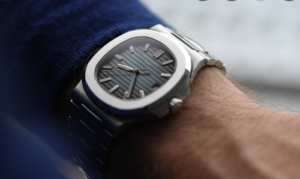
BREGUET NO. 1160, AN EXACT DUPLICATE OF THE “MARIE ANTOINETTE.”
I think to say that finishing here is merely decorative, or that it is merely the result of a quest for precision, is to create a false dichotomy that I very much doubt exists in the minds of those responsible for making it. This is one of the most important distinctions in looking at movement finishing.
One of the interesting things today as a watch writer interested in the technical and historical background is that Walt Odets, who basically invented the genre of technical watch reviews in the early 2000s on Timezone.com, had a non-zero chance of getting there before you did. The same is true for movement finishing, and I highly recommend his series on this subject (as I recommend everything he writes about cheap rolex replica, without exception). One of his comments in that series is particularly pertinent on this point.
“On the question of finish and durability, it is only necessary to point out one obvious fact. If every part of a movement has a function, it is also true that almost every part is working against another. The finish of these working surfaces has a lot to do with their longevity. While poorly finished surfaces can be partially compensated for in the short term by good (and sometimes excessive) lubrication, in the long term, they will show themselves by excessive wear, or, worse, by depositing the particulate products of wear in other working parts.
With this in mind, we can take a closer look at how movement finishing evolved with the advent and development of the era of high-precision portable timekeeping, and how it continues to evolve in watches.
This is a pocket tourbillon, made by Jaeger-LeCoultre in 1946, and while it is not a watch per se, it is a good example of top-quality movement finishing from the mid-20th century. This is very much a handmade watch, in which there is still no real hard distinction between function and decorative finishing. This is a watch that was made by JLC as part of a 26-piece for a chronometer trial. You get the impression that this finish is not intended to create anything decorative, but is the natural result of the watch’s handiwork and the desire of its maker to ensure long-term operation and the highest possible precision.
Nonetheless, the full finishing vocabulary for modern high-end swiss replica watches is still present, including black polished steel construction, Geneva stripes, polished screws, and mirror-polished countersunk holes, to name a few. Rather than getting something that has been decorated, you get a machine that has been handcrafted with the utmost care to perform a very unique and very demanding task.
Now, for the watch enthusiast, things start to get interesting. The pocket watch you see here has no low-end counterpart – it’s not like there’s a mass-produced basic movement whose mechanical quality can be assessed separately from the movement. However, by the mid-20th century, mass production of Swiss watch movements had reached a point where a couple of interesting things started to happen. The first was that the milling of parts began to reach a point where hand finishing and tuning were becoming less and less necessary for the function of the watch movement. Secondly, there are now situations where a movement produced in the tens of thousands (or more) shows huge variations in execution. One of the most striking examples is the Lemania CH 27.